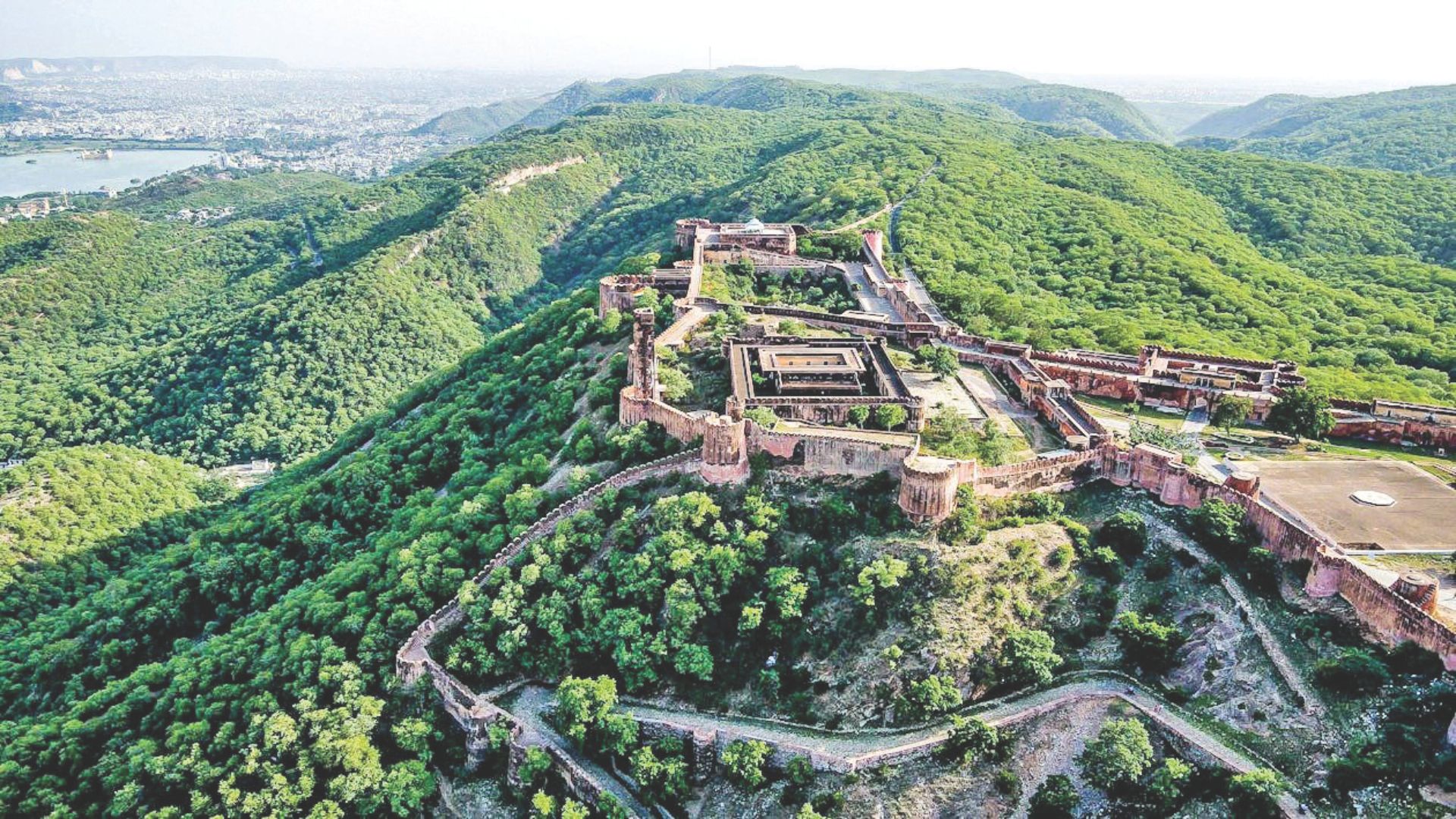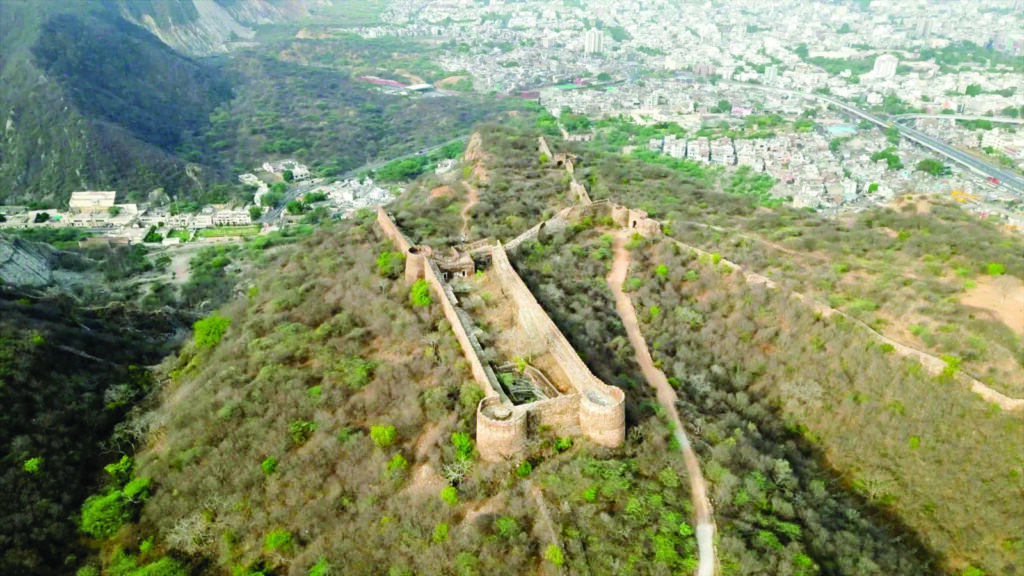
Amagarh Fort, situated on the eastern outskirts of Jaipur, is an intriguing site that combines history, culture, and a dash of mystery. This relatively lesser known fort offers a refreshing break from the usual tourist spots like Amber Fort or Nahargarh. Built by the Meena rulers, it provides a glimpse into Rajasthan’s layered history before the arrival of Rajput dominance. With its strategic location and rich historical significance, Amagarh Fort deserves a place on every traveler’s itinerary.
The Historical Significance of Amagarh Fort
The origins of Amagarh Fort trace back to the Meena rulers, who were the original inhabitants of the region. Built as a defense structure, the fort served as a watchtower against invasions and helped safeguard the resources and population of the area. Unlike the grandiose forts of Jaipur’s Rajput era, Amagarh Fort is modest in scale, emphasizing functionality over ornamentation.
Later, during the Rajput reign, the fort gained prominence as a strategic outpost to protect the Jaipur region. Its location atop a hill provided excellent visibility, making it a valuable asset for monitoring enemy movements. This layered history highlights the fort’s role as both a protective stronghold and a symbol of the region’s cultural transition.
Architecture of the Fort
Amagarh Fort is a classic example of Rajasthani architecture but with distinct influences from the Meena era. The fort is built using locally available materials like sandstone, and its design prioritizes practicality over luxury. Fort Walls and Gateways: The fort’s walls are robust and designed to withstand sieges. The gateways are narrow, an architectural feature meant to slow down invading forces. Strategic Positioning: The fort’s hilltop location makes it a vantage point offering panoramic views of the surrounding Aravalli hills and the city of Jaipur. Ruins and Remnants: While parts of the fort are in ruins, these remnants add to its rustic charm. Visitors can see old water storage systems, small temples, and bastions that hint at the fort’s past glory.

Relevance to the Meena Community
For the Meena community, Amagarh Fort holds immense cultural and spiritual importance. The fort is believed to be dedicated to Amba Mata, a goddess worshipped by the Meenas. Many community members visit the fort for religious rituals and to connect with their heritage.
Efforts are ongoing to document and preserve the fort’s history from the perspective of the Meena rulers, as much of it has been overshadowed by Rajput narratives. This adds an element of cultural revival to the fort’s significance, making it not just a historical monument but also a symbol of identity for the Meena community.
Exploring the Fort
Amagarh Fort offers a mix of adventure and tranquility, making it ideal for various types of travelers. Hiking to the Fort: The fort is accessible via a short but slightly challenging hike. The trail winds through rocky terrain, offering glimpses of local flora and fauna. This hike is particularly enjoyable in the cooler months when the weather is more pleasant. Panoramic Views: From the top, visitors are rewarded with stunning views of Jaipur and the surrounding hills. Sunrise and sunset at the fort are especially mesmerizing, making it a favorite spot for photographers. Exploring the Ruins: Walking through the fort’s ruins is like stepping back in time. The crumbling walls, ancient temples, and scattered relics evoke a sense of mystery and wonder.
Best Time to Visit
The ideal time to visit Amagarh Fort is during the winter months, from October to March. The weather is cool and comfortable, perfect for hiking and exploring. Monsoons, while scenic, can make the trails slippery and challenging to navigate. Summers are best avoided due to the intense heat in the region.

Nearby Attractions
Amagarh Fort is not far from Jaipur’s main attractions, making it easy to include in your travel plans. Galta Ji Temple, also known as the Monkey Temple, is an ancient pilgrimage site located nearby. It features beautiful architecture, sacred water tanks, and a peaceful ambiance. Nahargarh and Jaigarh Forts These forts offer a deeper dive into Jaipur’s history and provide a sharp contrast to the rustic charm of Amagarh Fort, Amber Palace. While more touristy, Amber Palace is a must-visit for its grandeur and historical significance.
Amagarh Fort and Its Role in Jaipur’s Tourism
Although relatively unknown, Amagarh Fort has the potential to become a significant player in Jaipur’s tourism scene. Efforts are being made by local communities and authorities to restore and promote the fort as a heritage site.
The fort provides a quieter alternative to the bustling landmarks of Jaipur, making it appealing to those seeking solitude or a more offbeat experience. With the growing interest in eco-tourism and sustainable travel, Amagarh Fort is well-positioned to attract a niche segment of travelers.
A Perfect Blend of Adventure and Serenity
Visiting Amagarh Fort is not just about history; it’s an adventure in itself. The short hike to the fort, though slightly challenging, is an experience worth undertaking. As you ascend through the rocky terrain, you are surrounded by the natural beauty of the Aravalli hills.
Once at the top, the fort offers a tranquil escape from Jaipur’s bustling tourist spots. The quiet ambiance, coupled with breathtaking views of the city and hills, makes it an ideal spot for those seeking solitude or a picturesque location for photography.
Walking through the fort’s ruins is like stepping back in time. The crumbling walls, scattered relics, and ancient temples evoke a sense of mystery and wonder. For those who enjoy exploring lesser-known destinations, Amagarh Fort offers an enriching experience.
Seasonal Beauty and Best Time to Visit
Amagarh Fort changes its mood with the seasons. In winter, the cool weather makes hiking and exploring a pleasure. The monsoons bring a lush green cover to the surrounding hills, adding to the fort’s charm. Summers, however, can be harsh and are best avoided for day visits.The best time to visit is from October to March, when the weather is pleasant and the fort’s natural and architectural beauty can be enjoyed to the fullest.
Travel Tips
Wear comfortable footwear. The hike to the fort involves rocky and uneven terrain. Carry water and snacks, there are no facilities at the fort, so it’s best to come prepared. Respect the heritage, avoid littering and refrain from defacing the walls or ruins. Visit in groups, while safe, visiting in groups adds to the fun and ensures assistance in case of emergencies.
The Future of Amagarh Fort
The Rajasthan government and local organizations are working to preserve Amagarh Fort. Plans include improving access, setting up information boards, and promoting the site through cultural events. If these efforts succeed, Amagarh Fort could emerge as a major cultural and historical landmark in Jaipur.
Amagarh Fort is more than just a historical site; it is a testament to Jaipur’s diverse heritage. Its understated beauty, rich history, and serene ambiance make it a must-visit for those looking to explore Rajasthan beyond its popular attractions. Whether you’re a history enthusiast, a nature lover, or simply seeking a quiet escape, Amagarh Fort has something unique to offer.















